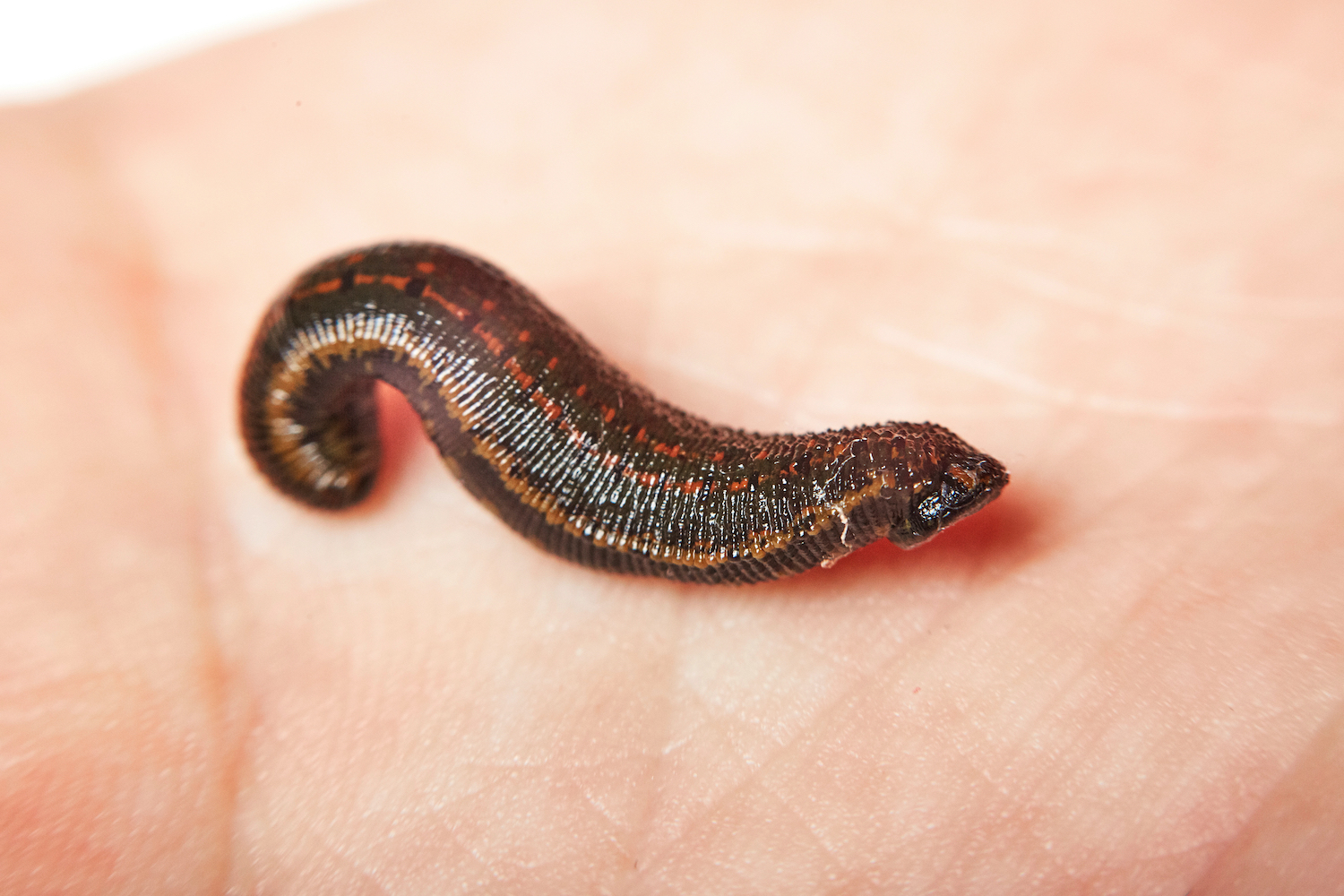The saliva of leeches, rich in valuable substances, is used in treating many ailments affecting animals. In their case, leech therapy supports conventional treatments as a natural method. Find out which animal diseases leech therapy can help and how four-legged patients tolerate the treatment.
Leech therapy, or treating various ailments using leeches, is a well-known and frequently used therapy method in humans. Observations show that it works equally well on animals. From a scientific point of view, using natural treatment methods in animals is justified, so the popularity of leech therapy in the veterinary world will soon increase.
Leech therapy as a treatment method for animals
Like humans, leech therapy in animals is not a magic cure for all possible diseases, nor does it replace conventional treatment. However, it is an effective complement to traditional treatment methods and should only be used in such a way.
In the case of leech therapy for animals, the knowledge regarding its use in humans is utilized. There is no precise list of diseases whose symptoms are alleviated by regular application of leeches. Knowing which diseases leech therapy helps cure in humans is also not entirely helpful, as animals are affected by completely different ailments.
Leech therapy procedures in animals should only be performed by competent individuals with veterinary knowledge and experience. Proper preparation allows them to eliminate contraindications and continuously monitor the animal’s condition during the procedure.
In treating what ailments in animals does leech therapy help?
Leeches are widely applied in treating diseases that often affect pets.
Medicinal leeches in veterinary surgery
Leech therapy is used in veterinary surgery to treat conditions such as:
- postoperative thrombosis,
- hematomas and swelling,
- subcutaneous tissue inflammation,
- compression syndromes of peripheral nerves.
Additionally, leeches effectively shorten the recovery period in animals after skin grafts.
Medicinal leeches for the musculoskeletal system
The application of leeches has been found helpful in treating musculoskeletal system diseases. Indications for leech therapy in this case include:
- joint degeneration,
- rheumatic diseases,
- post-traumatic hematomas,
- arthritis,
- tendonitis,
- ligament inflammation.
Medicinal leeches for vascular diseases
In the course of vascular diseases, regular application of leeches brings visible improvement in animals with conditions such as:
- thrombophlebitis,
- congestive oedema,
- lymphatic vessel congestion.
Medicinal leeches for neurological diseases
Leeches can also be used in animals for neurological diseases, including:
- paresis,
- compression syndromes of nerves,
- symptoms of contusion,
- brain concussion.
Medicinal leeches for inflammations
Leech therapy effectively treats inflammation in animals, including:
- appendages,
- mammary glands,
- eye uvea,
- ear,
- sinuses,
- skin.
Leeches can also be applied to animals suffering eye trauma, damaged corneas, or difficult-to-heal wounds.
Leech therapy in animals – when is it used?
Indications for placing leeches in animals are almost identical to those in humans. Leeches are most commonly applied to dogs and cats that have:
- spinal injuries,
- middle ear inflammation,
- postoperative wounds,
- hematomas and swelling,
- thrombosis,
- conjunctivitis,
- abscesses,
- boils,
- haemorrhoids,
- mastitis,
- eczema.
Leeches are also frequently applied to cats with injuries from bites or scratches and dogs with hip dysplasia, inflammatory conditions of the spine, and arthritis.
Recommendations for using leech therapy in horses
Horses are other animals often treated with leeches for various ailments, as commonly as cats and dogs. In horses, leech therapy is performed for:
- equine podotrochlosis,
- laminitis,
- arthritis,
- lymph node inflammation,
- mastitis,
- injuries and hematomas,
- abscesses and boils.
What effects does leech therapy have on animals?
Severe pain is a common symptom of ongoing disease in an animal’s body. Leech therapy eliminates swelling and inflammation, providing immediate relief.
Not all ailments troubling the animal may disappear immediately, but a noticeable improvement in its health and well-being can be observed sooner or later.
Leech therapy procedure in animals – what does it look like?
Animals tolerate therapy using leeches better than humans. Leeches do not bother them in any way and do not cause any unpleasant conditions – during the procedure, the patient is calm, usually sleeping or eating.
There is no need for anaesthetic.
Ize the animal before the procedure, as the therapy does not cause pain. The sensation accompanying the leech’s bite into the diseased area is comparable to a mosquito bite.
The number of leeches used during the procedure depends on the disease, the severity of symptoms, or the extent of pathological changes. The procedure is performed similarly in humans and lasts 30 to 90 minutes, usually until the leeches detach themselves. After the bleeding stops and a dressing is applied, the four-legged patient can return home.
The leech therapist determines the placement of leeches based on their veterinary knowledge and experience. The procedure’s duration depends mainly on how well the patient will tolerate it.
How often should the procedure be repeated?
It all depends on the case. In some patients, 1-2 repetitions of the procedure are sufficient for the symptoms to subside completely, while in others, multiple sessions of leech therapy are needed.
Some health problems affecting animals cannot be cured. A good example is degenerative changes – leeches, in this case, only improve blood circulation in the affected area, increase tissue elasticity, and, to some extent, alleviate pain.
Applying leeches has many advantages. Very often, leech therapy proves more effective than classical pharmacological treatment and can complement it. Therefore, when the opportunity arises, it is worth subjecting your pet to leech therapy to alleviate its pain and improve its health.

